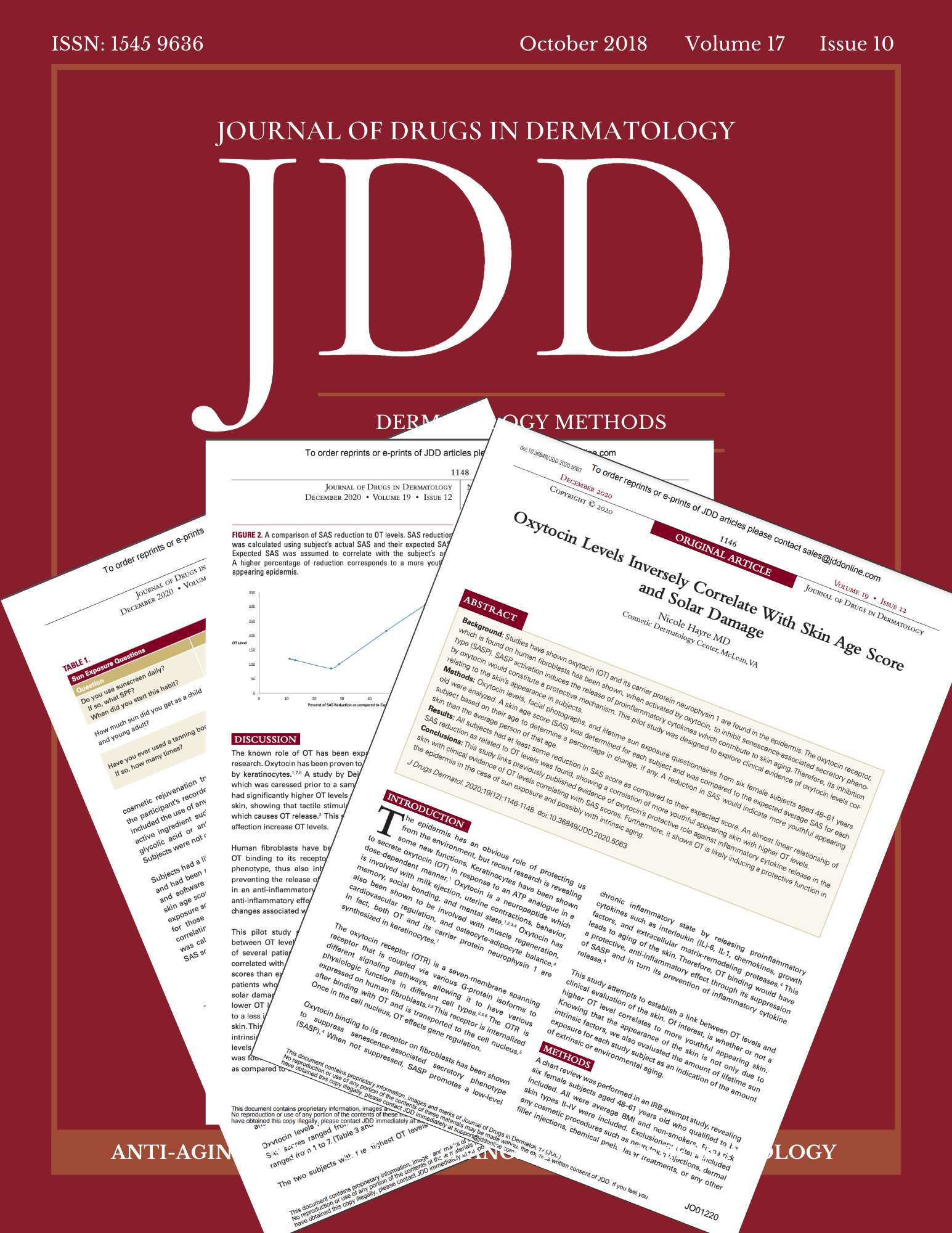My research led me to a hero ingredient which has similar effects on the skin as Oxytocin. This patented botanical is found in Cutocin©.
Dr. Nicole Hayre
Fragrance Free
Paraben Free
Gluten Free
No Animal Testing
Made in the USA
Study shows higher oxytocin levels help protect skin from natural aging process and sun damage.

The Science
Dr. Hayre’s love of science and research inspired her to perform a pilot study that proved a clinical link between Oxytocin (“the love hormone”) and the health and beauty of skin. This ground-breaking work caught the attention of the Dermatology field and was the lead article in the peer-reviewed Journal of Drugs in Dermatology in December 2020, published in Dermatology Times in February 2021, and recognized to be one of the top stories in Dermatology for 2021. In October 2022, the United Nations took notice where Dr. Hayre was invited to speak about her innovative research and discovery.
These findings led to the creation of Dr. Hayre’s clinical skincare brand, Cutocin. Formulated with a patent-pending ingredient, Cutocin products mimic the effects of Oxytocin in the skin, resulting in a healthier, younger looking appearance.
Featured in The Journal of Drugs in Dermatology
Featured in the prestigious Journal of Drugs and Dermatology, Dr. Hayre’s ground breaking study related to the Oxytocin effect on skin and aging revealed the higher Oxytocin levels you have, the smoother, younger and brighter your skin will look regardless of age or sun exposure. The release of Oxytocin directly correlates to a more youthful appearance.
Scientific Background
Studies have shown Oxytocin (OT) and its carrier protein Neurophysin 1 are found in the epidermis. The Oxytocin receptor, which is found on human fibroblasts has been shown, when activated by Oxytocin, to inhibit senescence-associated secretory phenotype (SASP). SASP activation induces the release of proinflammatory cytokines which contribute to skin aging. Therefore, its inhibition by Oxytocin would constitute a protective mechanism. This pilot study was designed to explore clinical evidence of Oxytocin levels correlating to the skin’s appearance in subjects.
Methods
Results
Conclusions
This study links previously published evidence of Oxytocin’s protective role against inflammatory cytokine release in the skin with clinical evidence of OT levels correlating with SAS scores. Furthermore, it shows OT is likely inducing a protective function in the epidermis in the case of sun exposure and possibly with intrinsic aging.
